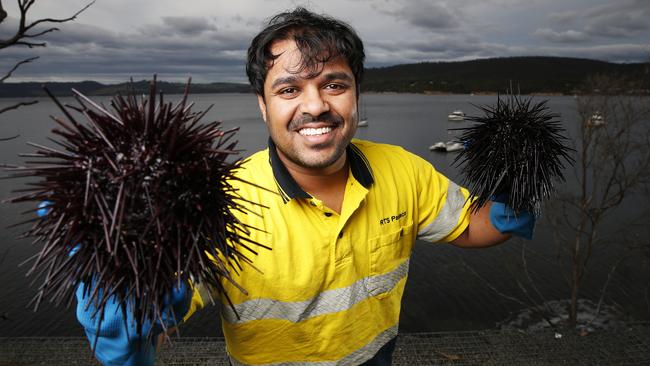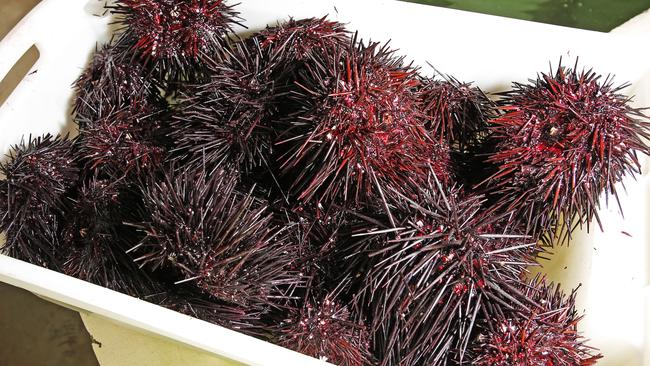Urchin fisheries help reduce the invasive species’ population
An estimated 20 million urchins have plagued the East Coast since a single urchin was first discovered off St Helens in 1978 — but new research has revealed promising progress for decreasing the pests’ population. DETAILS >>
Tasmania
Don't miss out on the headlines from Tasmania. Followed categories will be added to My News.
The first scientific assessment of Tassie’s growing Long-spined Sea Urchin fishery has revealed promising progress for decreasing the pests’ population.
An estimated 20 million urchins have plagued the East Coast since a single urchin was first discovered off St Helens in 1978.
But new research into the spiky sea animals has found urchin fisheries have helped reduce the invasive species’ population and regenerate marine habitats.

Lead author of the Tasmanian Long-spined Sea Urchin Fishery Assessment 2018/19, Dr Katie Cresswell, said fisheries had removed 2.5 million urchins since 2017, equating to 1000 tonnes.
She said the average species growth rate of 150 tonnes a year was trumped by a catch rate of 560 tonnes recorded in 2019.
“The positive signs are that the catch is at a good level and the northern zone no longer needs subsidies for the fishing,” Dr Cresswell said.
RELATED NEWS:
- Population explosion of sea urchins devastating coastline
- ‘Juicy’ scallops back on the menu as season resumes
- Crustacean key to saving fisheries
She said the Institute for Marine and Antarctic Studies and CSIRO would continue research later this year to determine whether reduced urchin numbers had positively impacted the struggling kelp population.

RTS Pauaco Australian operations manager Simon Owen said the Electrona processing facility harvested 35 tonnes between Dunalley and Cape Hauy for local, domestic and international markets this season.
“Ordinarily we target larger fish that are more likely to give us a higher quality roe, but in this case we took all sizes as an eradication measure,” Mr Owen said.
He said the industry was working with researchers and concerned abalone and rock lobster fishers to meet a “happy medium” for a sustainable commercial fishery.


